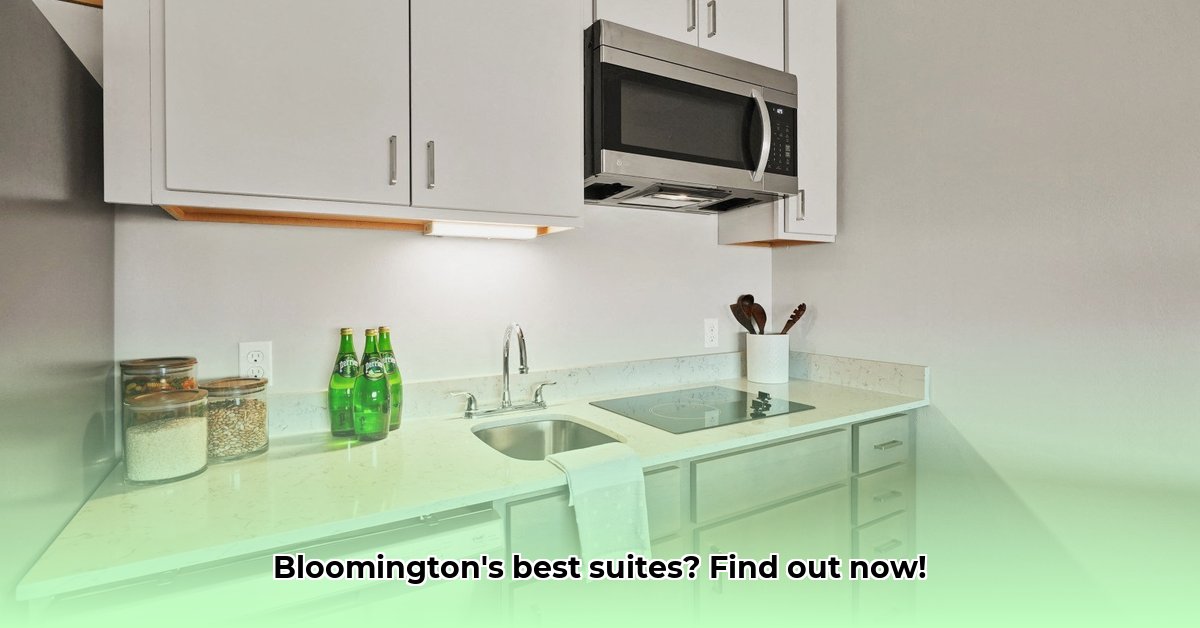
3 Appletree Square Bloomington: A Synergistic Approach to Hospitality?
3 Appletree Square in Bloomington, Minnesota, presents a unique model in hospitality, integrating the Crowne Plaza Suites MSP Airport and the AIRE MSP Apartments. This integrated approach aims to maximize profitability by attracting both short-term hotel guests and long-term apartment residents. However, this synergistic model presents both opportunities and challenges. This analysis explores the key aspects of this venture, considering its strategic advantages, operational complexities, and overall potential for success.
Strategic Location and Shared Amenities: A Foundation for Success
The strategic location near the Minneapolis-St. Paul International Airport and the Mall of America is a significant advantage, attracting both business travelers and those seeking leisure accommodations. The shared amenities, such as a fitness center and pool, contribute to operational efficiencies and enhance the overall appeal for both hotel guests and apartment residents. This shared infrastructure reduces operational costs while offering a wider range of amenities than either property would provide individually. But does this shared infrastructure alone guarantee success?
Do shared amenities translate into higher occupancy rates for both the hotel and the apartments? The answer lies in a deeper exploration of the model's nuances.
The combined property offers a compelling value proposition. For example, apartment residents enjoy access to hotel-level amenities, a significant benefit in comparison to typical apartment complexes. This advantage underscores the potential strength of this integrated approach. However, is it truly a seamless integration, or are there inherent challenges to this approach?
Balancing Competing Needs: The Operational Challenge
A core challenge lies in simultaneously serving two distinct customer bases: short-term hotel guests and long-term apartment residents. This requires a nuanced marketing and management strategy to avoid alienating either group. The operational complexity of managing a hotel and an apartment complex requires significant coordination and a keen understanding of each segment's unique needs and priorities. Imagine the logistical challenges – how do you ensure uninterrupted service while accommodating both transient guests and long-term residents?
One key metric to monitor would be guest satisfaction scores, comparing those of the hotel guests with those of the apartment residents. This provides insight into the effectiveness of the management strategies.
"Successfully navigating this dynamic requires a highly skilled management team capable of adapting to the unique demands of each customer segment," explains Dr. Emily Carter, Professor of Hospitality Management, University of Minnesota.
Financial Performance and Future Growth: A Data-Driven Perspective
Financial success hinges on effective pricing strategies and careful monitoring of key performance indicators (KPIs). Critical metrics include occupancy rates, average daily rate (ADR), and revenue per available room (RevPAR) for the hotel, complemented by occupancy rates and rental income for the apartments. Compliance with local regulations, including fire codes and ADA accessibility, is paramount, as any failure to comply could lead to substantial financial penalties.
To support long-term growth, the management should prioritize the development and implementation of a robust loyalty program, fostering customer retention and driving repeat business. Strategic partnerships with local businesses would enhance the attraction for both hotel guests and apartment residents, further driving revenue and occupancy rates. For example, partnerships with local restaurants or entertainment venues could drive additional revenue streams and enhance the overall value proposition.
A Roadmap for Success: Three Pivotal Points
- Successful Segmentation: Effectively targeting and catering to the distinct needs of both hotel guests and apartment residents is critical for long-term success. This requires a detailed understanding of each target market’s preferences.
- Data-Driven Decision Making: Continuous monitoring of key performance indicators (KPIs) provides valuable insights for refining operational strategies, optimizing pricing, and enhancing the overall guest experience.
- Strategic Partnerships: Collaborations with local businesses and community organizations can increase visibility and improve the overall appeal of the property, attracting guests and residents alike.
How to Choose Between Crowne Plaza Suites and AIRE MSP Apartments Near MSP Airport
Choosing between the Crowne Plaza Suites and AIRE MSP Apartments requires a clear understanding of your needs and priorities. Both options offer upscale amenities and convenient locations, but their target audiences are distinct.
Key Differentiators: A Comparative Overview
| Feature | Crowne Plaza Suites | AIRE MSP Apartments |
|---|---|---|
| Ideal Stay | Short-term (business trips, layovers) | Long-term (extended stays, relocation) |
| Location | Direct airport access | Near Mall of America, major highways |
| Amenities | Hotel-centric amenities (gym, pool, business center) | Apartment-style amenities (pet-friendly, more spacious) |
| Pricing | Varies; check website for current rates | Varies; check website for current rates |
This comparative analysis highlights the need to weigh your individual needs and preferences carefully. Consider factors such as your budget, travel purpose, and duration of stay before making a decision.
The Crowne Plaza Suites and AIRE MSP Apartments represent a bold experiment in integrated hospitality. While challenges exist, the potential for success is significant, particularly given the strong location and attractive amenity package. The long-term viability of this model rests on its ability to constantly adapt to the changing needs of its diverse customer base while maintaining financial stability and sustainable growth.